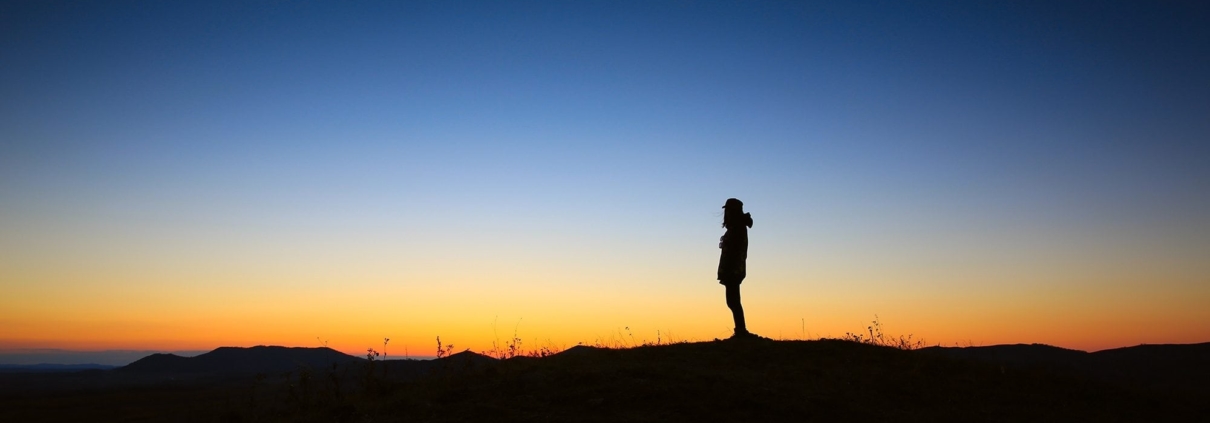How Should Places at Extreme Northerly Latitudes Calculate Prayer Times?
Shafi'i Fiqh
Answered by Shaykh Irshaad Sedick
Question
To the best of my knowledge, the time for ‘Isha prayer commences when the sun is 12 degrees below the horizon, known as nautical twilight. Fajr prayer begins when the first hint of light becomes visible on the eastern horizon.
Most sources indicate this occurs around 18 degrees below the horizon, called astronomical twilight. Please feel free to correct me if I need clarification. In Germany and other northern countries, there is no true night during the summer season.
Although the sun does dip below 12 degrees, signifying the start of Isha prayer at approximately 11:52 PM, it never exceeds the 18-degree mark. This raises the question of which standard to adopt for Fajr prayer since the light lines in the sky are continuously visible.
Answer
In the Name of Allah, the Most Merciful and Compassionate.
May Allah alleviate our difficulties and guide us to what pleases Him. Amin.
If one’s location does not have one or more prayer times, such as true dawn, sunrise, etc., due to the extreme northerly latitude, then one should pray at the same time as the closest city with the true times. [Keller, Reliance of the Traveller]
How to Calculate Prayer Times Accordingly
For each degree of longitude that this closest city lies to the east of one’s location, the prayer time of the city will arrive earlier than at one’s own position by four minutes. One may wish to compensate for this error factor by the appropriate calculations, i.e., not praying simultaneously with that city’s times, but after its time, by four minutes for each degree of longitude it lies to the east, or before its time by four minutes for each degree of longitude it lies to the west. [ibid.]
What to do About Miscalculations
In any case, if one’s prayer times for several days are later found to have been mistaken, one only needs to make up one day’s prayers. [Ibid.]
No True Dawn
For both the dawn prayer (subh) and the dawn that marks the beginning of the fasting days of Ramadan, if there is sunset and sunrise at one’s location but not true dawn because of the persistence of twilight all night, one copies the nearest city that has the true times in terms of the amount of time by which dawn in that city precedes sunrise there.
Thus if dawn in this nearest city precedes sunrise by 90 minutes, one’s own “dawn” occurs 90 minutes before the sunrise in one’s own city. And similarly, for the amount of time by which nightfall (‘isha) follows the sunset prayer (maghrib). [Ibid.]
I pray this is of benefit and that Allah guides us all.
[Shaykh] Irshaad Sedick
Checked and Approved by Shaykh Faraz Rabbani
Shaykh Irshaad Sedick was raised in South Africa in a traditional Muslim family. He graduated from Dar al-Ulum al-Arabiyyah al-Islamiyyah in Strand, Western Cape, under the guidance of the late world-renowned scholar Shaykh Taha Karaan.
Shaykh Irshaad received Ijaza from many luminaries of the Islamic world, including Shaykh Taha Karaan, Mawlana Yusuf Karaan, and Mawlana Abdul Hafeez Makki, among others.
He is the author of the text “The Musnad of Ahmad ibn Hanbal: A Hujjah or not?” He has served as the Director of the Discover Islam Centre and Al Jeem Foundation. For the last five years till present, he has served as the Khatib of Masjid Ar-Rashideen, Mowbray, Cape Town.
Shaykh Irshaad has thirteen years of teaching experience at some of the leading Islamic institutes in Cape Town). He is currently building an Islamic online learning and media platform called ‘Isnad Academy’ and has completed his Master’s degree in the study of Islam at the University of Johannesburg. He has a keen interest in healthy living and fitness.
